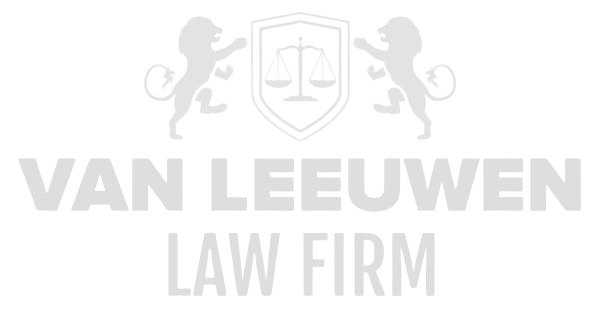Artificial Intelligence (AI) has emerged as one of the most transformative technologies of the 21st century, with applications across numerous sectors—from healthcare and finance to industry and public administration. While AI undoubtedly offers significant benefits in terms of efficiency, productivity, and innovation, its rise also presents considerable legal and ethical challenges. One of the most pressing questions is how AI can contribute to the fight against serious forms of fraud, bribery, and corruption—offenses that affect both the public and private sectors. These crimes are complex in nature, often hidden within layered networks of transaction histories, geopolitical interests, and opaque business practices.
High-level fraud, bribery, and corruption in business and politics cause enormous economic damage and undermine trust in judicial, commercial, and governmental systems. AI presents promising opportunities to detect, analyze, and prevent these forms of criminality—but the technology must be managed carefully to ensure its ethical and effective use. This article explores the role of artificial intelligence in combating serious fraud, bribery, and corruption, examines the key challenges in using AI for these purposes, and considers the implications of this technology for law enforcement, compliance, and ethical governance.
Artificial Intelligence as a Tool for Detecting Fraud and Corruption
One of the most powerful applications of AI in the fight against fraud, bribery, and corruption is its ability to identify patterns of criminal behavior that are difficult to trace using traditional methods. Through advanced algorithms and machine learning (ML), AI systems can analyze vast volumes of data and uncover hidden connections between transactions, behaviors, and business relationships. This is particularly crucial in complex environments such as the financial sector, where criminal networks often conceal themselves behind obscure corporate structures and international transactions.
For example, AI can be used to monitor financial flows, detect suspicious payments, and identify irregularities in business reports. Fraud detection algorithms can flag suspicious activity in real time, such as unusual payment flows, unexplained financial movements, or transactions between unknown entities. Through machine learning, these systems improve continuously as they process more data, increasing their effectiveness in recognizing increasingly sophisticated fraud schemes.
However, deploying AI in this context presents significant challenges. The accuracy of AI models depends on the quality and quantity of the data they are trained on. If the data is biased or incomplete, AI systems can draw incorrect conclusions, leading to false alarms or unjust accusations. Furthermore, advanced criminal networks may themselves employ AI to obscure their tracks, undermining the effectiveness of detection systems. It is therefore essential that AI systems are not only continuously optimized but also consistently validated through rigorous human analysis.
AI and Compliance: Ensuring Legal Adherence in Complex Environments
In complex corporate environments, where regulatory compliance is often difficult to maintain, AI can play a pivotal role in strengthening internal controls. AI can help companies continuously monitor their activities to ensure they comply with national and international regulations concerning fraud, bribery, and corruption. These include anti-money laundering (AML) regulations, the Foreign Corrupt Practices Act (FCPA), and the UK Bribery Act. By integrating AI-driven compliance systems, companies and governments can detect potential violations early, respond more quickly, and minimize risk.
An example of this is using AI to automate due diligence processes, allowing companies to efficiently assess the risk profiles of business partners and customers. This helps them avoid engaging with actors involved in fraudulent or corrupt practices, reducing both legal and reputational risks. AI can also monitor internal business processes such as procurement and contract management to ensure transparency and compliance.
However, AI-driven compliance must be implemented thoughtfully. Overreliance on technology can cause organizations to overlook the critical human judgment required to interpret complex legal and ethical nuances. Laws and regulations are constantly evolving—and AI systems must be flexible enough to adapt to changing standards and guidelines. There is a risk that companies may blindly trust AI systems without fully understanding their limitations, which could result in compliance failures if systems are not properly updated.
The Ethics of AI in the Fight Against Corruption and Fraud
Using artificial intelligence to combat fraud, bribery, and corruption raises a range of ethical questions that must be addressed with care. AI not only detects wrongdoing—it can also influence behavior, creating ethical dilemmas. For instance, using AI to monitor employees or executives for potential bribery or fraud may raise privacy concerns and questions about transparency in surveillance practices.
One of the most pressing concerns is the potential for bias in AI systems. If an AI system is trained on data that contains historical prejudices, it may systematically disadvantage certain groups or generate misleading conclusions, with serious legal and societal consequences. Companies deploying AI to fight corruption risk making automated decisions without fully considering the broader ethical implications.
Organizations must therefore invest not only in the technology itself, but also in the ethical frameworks that govern its use. It is crucial to develop AI systems that are transparent, fair, and accountable—systems that respect fundamental rights and operate in harmony with societal values and norms.
Cybersecurity Challenges and AI in Fraud Prevention
While artificial intelligence is a powerful tool in the fight against fraud and corruption, its use also introduces new cybersecurity risks. The vast volumes of data processed by AI systems can become targets for hackers or be misused. Criminals may attempt to manipulate AI systems to cover up fraudulent activity or gain access to valuable information generated by those systems.
Moreover, advanced AI techniques such as deepfakes or Generative Adversarial Networks (GANs) can be used by criminals to fabricate digital evidence or erase traces of wrongdoing. This means that regulators, companies, and governments must invest not only in AI for fraud detection, but also in advanced cybersecurity measures to protect the integrity of AI systems.
Creating secure AI environments and implementing robust security protocols are essential to maintaining the effectiveness of AI in the fight against fraud and corruption. Only through a deep understanding of both the advantages and risks of AI can organizations deploy this technology in a responsible and secure manner.
The Future of AI in Combatting Serious Fraud and Corruption
Artificial intelligence holds tremendous potential for uncovering and addressing serious cases of fraud, bribery, and corruption—but the technology also carries significant challenges and risks. Its effectiveness depends critically on data quality, ethical deployment, and the integrity of the systems used. AI can serve not only as a powerful tool to monitor financial transactions and business relationships, but also as a key element in strengthening compliance and law enforcement.
Nevertheless, companies, governments, and legal institutions must remain acutely aware of AI’s inherent limitations and risks—including bias, privacy concerns, and cybersecurity threats. It is essential that AI systems be carefully managed, deployed transparently, and continuously refined to ensure they contribute meaningfully to solving fraud and corruption issues—without creating new ethical or security concerns. When applied effectively and ethically, AI can play a decisive role in fighting serious financial crime and contribute to a more transparent and just economic system.















